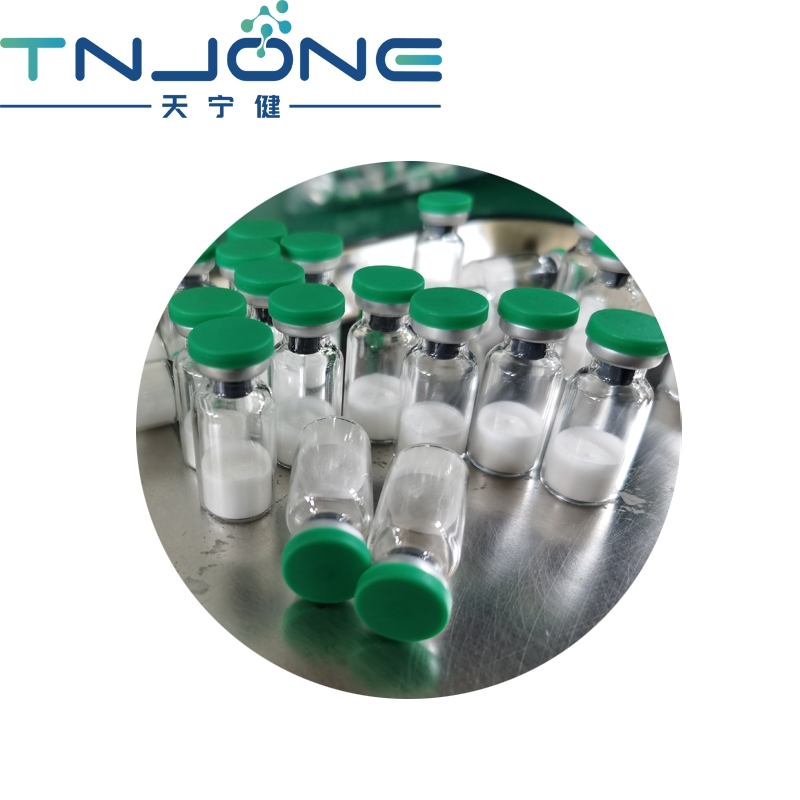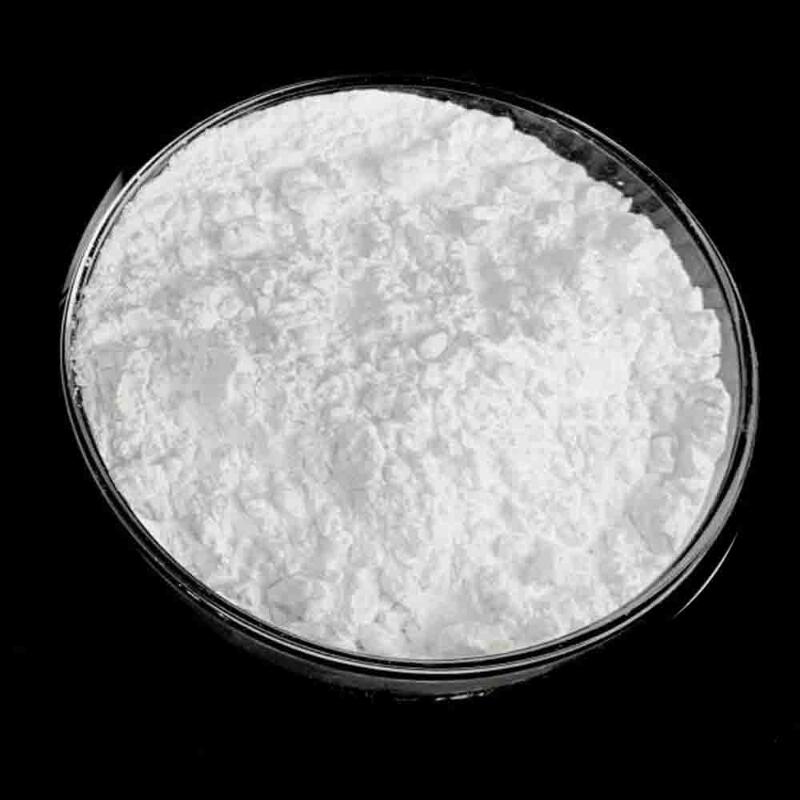-
Categories
-
Pharmaceutical Intermediates
-
Active Pharmaceutical Ingredients
-
Food Additives
- Industrial Coatings
- Agrochemicals
- Dyes and Pigments
- Surfactant
- Flavors and Fragrances
- Chemical Reagents
- Catalyst and Auxiliary
- Natural Products
- Inorganic Chemistry
-
Organic Chemistry
-
Biochemical Engineering
- Analytical Chemistry
-
Cosmetic Ingredient
- Water Treatment Chemical
-
Pharmaceutical Intermediates
Promotion
ECHEMI Mall
Wholesale
Weekly Price
Exhibition
News
-
Trade Service
*For medical professionals only
The third line of advanced CRC uses fruquintinib to seek a first-line life for the patient
Data show that 25 percent of colorectal cancer (CRC) patients have metastasized at first diagnosis, with the liver being the most common site of metastasis of CRC and the leading cause of death in patients with advanced CRC [1
To this end, the Colorectal Cancer Committee of the Chinese Society of Clinical Oncology and Huang Medicine jointly held the 2022 "Excellent YOUNG Good Medical Voice - Speech on the Whole Process Management of Advanced Colorectal Cancer"
Case review
male patients, 50 years;
Current medical history: In September 2019, the patient had "intermittent epigastric abdominal pain for 2 months, occasionally black stool", and on September 24, 2020, the MRI of the outer hospital prompted: multiple placeholders in the S4 segment of the liver, raising abnormal signals of the colon, considering the possibility of tumor lesions; Hospitalization for further consultation;
Past history: in 2015, the patient underwent right tibia-fibular and femoral internal fixation due to a car accident, and had a history of blood transfusion; More than 20 years of history of schistosomiasis;
Physical examination: no obvious abnormalities are seen;
Laboratory tips: CA199:1841.
Colonoscopy prompts: 60cm of the lens can see a huge mass of the ascending colon blocking the intestinal lumen, the intestinal lumen is narrowed, and the microscopic body is not easy to pass
CT suggests: large mass lesions in the right half of the colon, multiple mass in the S7 and S4 segments of the liver, considering the possibility of tumor;
Figure 1 CT images on October 6, 2020
▎Diagnosis and treatment
After the patient was admitted to the hospital, the preoperative related examinations were perfected, the contraindications to surgery were ruled out, and on October 15, 2020, the patient underwent laparotomy + liver tumor resection + gallbladder resection + large omental resection + right half colon radical resection;
Postoperative pathological prompts: ileoblascular carcinoma of the blind part, low differentiation, tumor size of 6.
7 cm * 6.
2 cm * 5 .
6cm, tumor invasion of the serous layer, visible vascular infiltration, no nerve infiltration
.
No cancer metastases
were seen in the lymph nodes sent for examination (60 pieces).
1 cancerous nodule is visible in the mesenteric membrane;
Immunohistochemistry: MSH6 (+), MSH2 (+), MLH1 (+), PMS2 (+), Ki67 (positive rate is about 70%);
Remaining pathological indications (liver tumors): metastatic colon cancer, adenosquamous cell carcinoma
.
The tumor infiltrates into the mucosal layer of
the gallbladder.
No cancer is seen in the tissue of the liver section, and no cancer is seen in the tissue of the broken end of the gallbladder;
Immunohistochemistry: adenocarcinoma area: Ki-67 (positive rate of about 70%); Squamous cell carcinoma areas: CK5/6(+), P40(+), P63(+);
▎ Diagnosis of disease
Low-differentiation adenous squamous cell carcinoma of the right half of the colon with hepatic metastasis (pT4N1cM1), microsatellite stabilization (MSS
).
▎ Efficacy evaluation
One month postoperative re-examination of CT suggests: right lobe of the liver, new metastases in the left outer lobe of the liver, hilar mass, lymph node metastases
considered.
Assess disease progression (PD
).
Perfect genetic testing tips: KRAS gene exon 2 G12D mutation
.
▎First-line treatment (December 2020 - July 2021)
Table 1 First-line treatment progress and efficacy evaluation table
Fig.
2 CT images in first-line therapy
▎2nd line treatment (July 22, 2021 - September 27, 2021)
- Treatment regimen: bevacizumab combined with xeliri chemotherapy 3 cycles;
- Efficacy evaluation: multiple nodules of the liver parenchyma, enlarged compared with the previous; Multiple enlarged lymph nodes in the hepatic portal, portal space and retroperitoneum, considering lymph node metastasis, slightly smaller than before;
Fig.
3 Comparison of CT images of second-line therapy
▎Third-line treatment (28 September 2021 – case reporting deadline)
Treatment regimen: fruquintinib + sindilimab;
Evaluation of efficacy: disease stabilization (SD);
Figure 4 CT imaging evaluation of third-line therapy
Expert reviews
Instructor: Professor Wang Wenbo, Zhongnan Hospital, Wuhan University
Expert comments: Professor Shen Rong of Shandong Provincial Hospital
The above case is a CRC patient with advanced diagnosis and liver metastases, and the supervisor Professor Wang Wenbo said that in the early treatment, the first-line and second-line treatment regimens were not effective, the response to the local lesions was not ideal, and the patient had progressed to third-line treatment
in only 6 months.
After comprehensive consideration of the patient's situation, it was decided to break the traditional treatment model, and the treatment plan of fruquintinib combined with sindilizub was effective, and the disease control time of the third-line treatment far exceeded that of the first and second-line treatments
.
Suggests that anti-angiogenic combination immunotherapy has some effectiveness in mCRC, and the prospect is promising
.
Professor Shen Rong said that the data of the IB phase study of fruquintinib combined with sindilizumab led by Professor Li Jin announced at the 2021 ASCO Annual Meeting showed that the objective response rate (ORR) and disease control rate (DCR) of 95.
5% using fruquintinib (5 mgQD, taking the drug for 2 weeks, stopping the drug for 1 week) combined with sindili maclizumab (200 mgQ3 weeks) were 27.
3%, and the disease control rate (DCR) was 95.
5%.
The median progression-free survival (mPFS) was 6.
9 months and was generally safe and well tolerated[2], and the findings were confirmed
in the real-world cases described above.
Anti-angiogenic drugs have the effect of normalizing tumor blood vessels and alleviating immunosuppressive states, and through combined use with immune checkpoint inhibitors, they can achieve the effects of improving the immune microenvironment, promoting vascular remodeling, and increasing immune effector cell infiltration, thereby further improving the anti-tumor efficacy [3] playing a synergistic role
.
Figure 5 Schematic diagram of patient laboratory indicators and disease course
Case highlights
The above case is a case of right hemicular hypodivicular adenoma with hepatic metastases at the first diagnosis, and in MSS patients (pT4N1cM1), first- and second-line treatment is based on systemic therapy combined with local radiation therapy of the liver, but the efficacy is not satisfactory
.
Fortunately, in the third line of treatment, patients have been prescribed fruquintinib in combination immunotherapy for nearly a year now, and patients with SD
are followed.
Immunotherapy is currently more effective in patients with microsatellite highly unstable (MSI-H) advanced CRC, but it accounts for only 5% of patients with advanced CRC and is minimally effective against MSS-type CRCs accounting for about 95% [4
].
At present, anti-angiogenic combination immunotherapy is still in the preliminary exploration stage, but in the above real case demonstration, we have seen the gratifying results of patients receiving furuquintinib combined with sindilimab in third-line treatment, and the PFS of third-line treatment is far beyond the first and second lines, and it is still continuing to benefit
.
It also provides a certain reference significance for subsequent MSS-type similar mCRC cases, and it is expected that the follow-up combination of furuquintinib will bring more encouraging results
to MSS patients.
References:
[1].
Gastrointestinal Surgery Group of The Surgery Branch of the Chinese Medical Association, Colorectal Surgery Group of the Surgery Branch of the Chinese Medical Association, Colorectal Cancer Professional Committee of the Chinese Anti-Cancer Association, et al.
Guidelines for the Diagnosis and Comprehensive Treatment of Liver Metastasis of Colorectal Cancer in China (2018 Edition)[J].
Chinese Journal of Gastrointestinal Surgery,2018,17(6):527-539.
[2].
Ye Guo, Weijie Zhang, Jieer Ying, et al.
Preliminary results of a phase 1b study of fruquintinib plus sintilimab in advanced colorectal cancer.
2021 ASCO Abstract 2514.
Liu Ying, Li Danyang, Xu Shuning, et al.
Research progress of anti-angiogenic therapy combined with immune checkpoint inhibitors in the treatment of solid tumors[J].
Chinese Journal of Oncology,2022,49(3):143-149.
[4].
The microsatellite instable subset of colorectal cancer is a particularly good candidate for checkpoint blockade immunotherapy.
Cancer Discov.
2015 Jan; 5(1):16-8.







